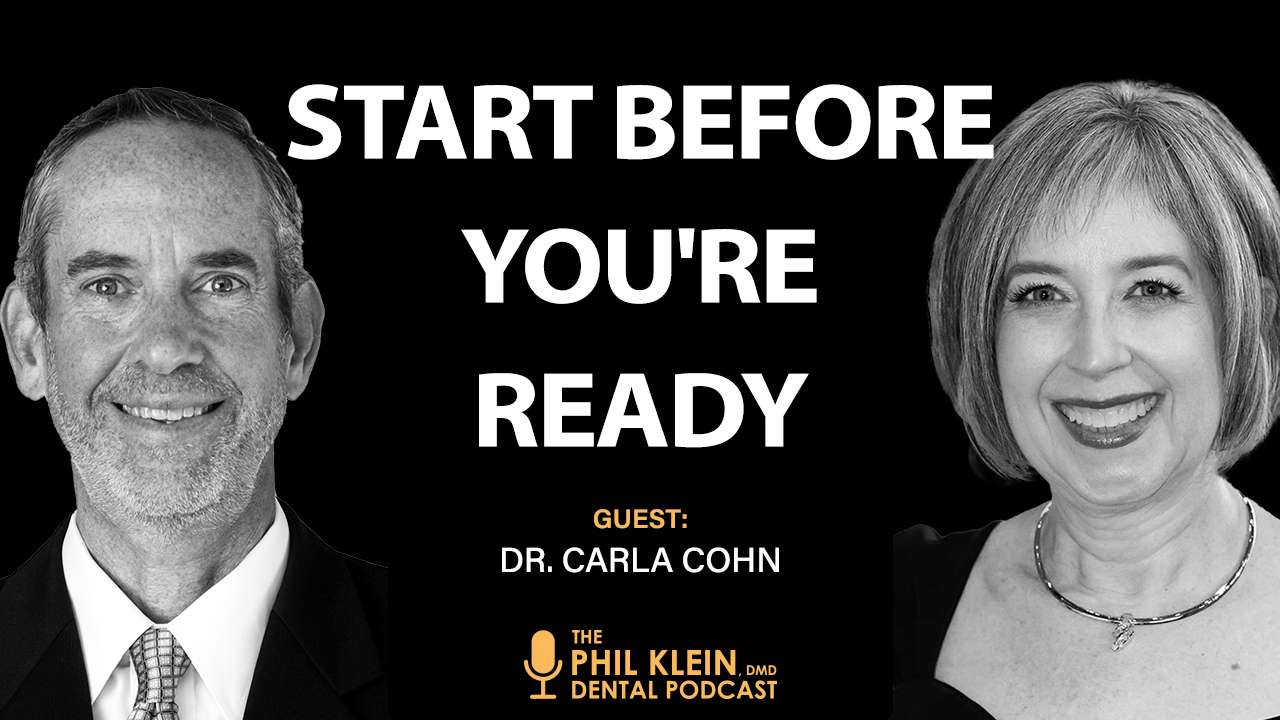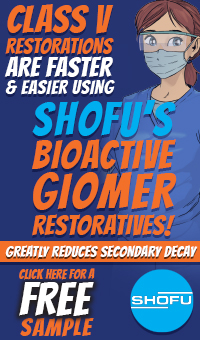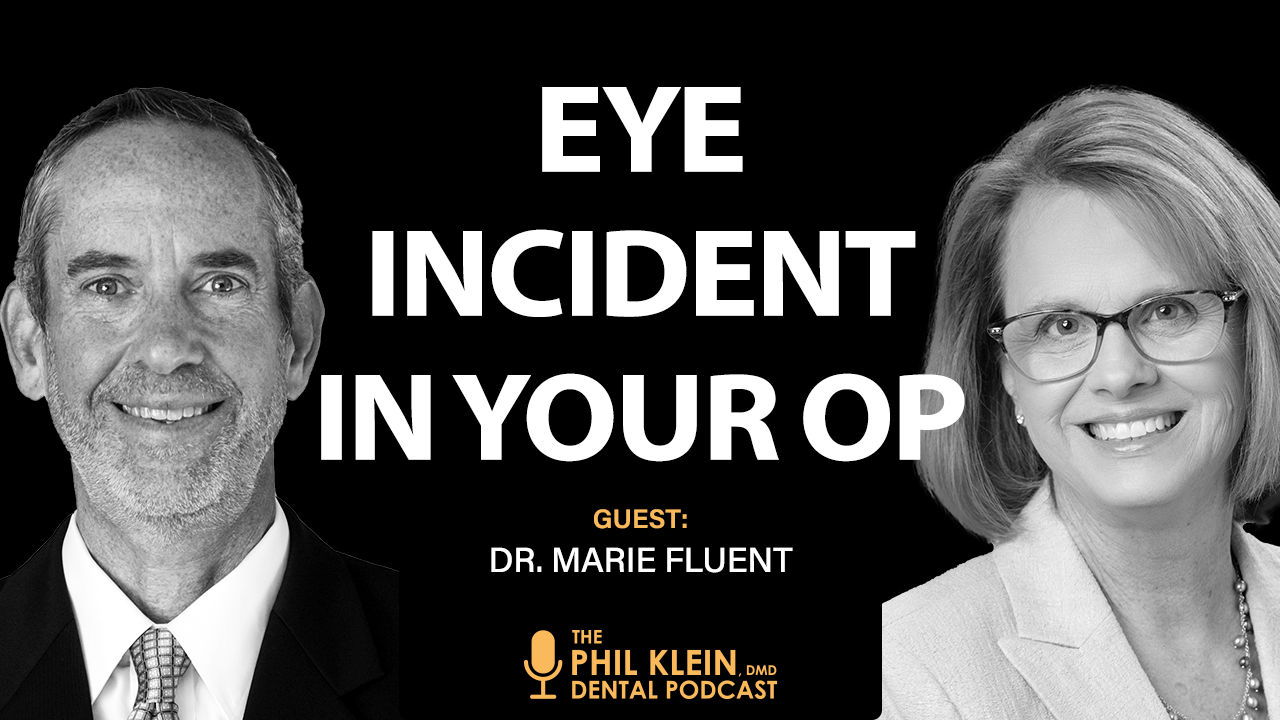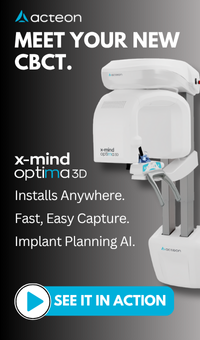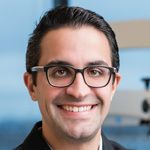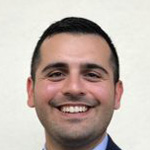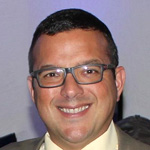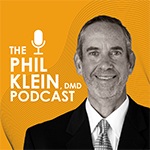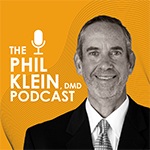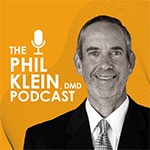Join us for an exclusive live CE webinar with Juan F. Yepes, DDS, MD, MPH, MS, DrPH, FDS RCDS(Ed) — a nationally recognized pediatric dentist, professor, and thought leader in minimally invasive pediatric care. With his extensive clinical and academic background, Dr. Yepes will share why he believes replacing alginate impressions with digital scanning is one of the most important shifts in pediatric dentistry today.
Advancements in ceramic materials and digital workflows are transforming modern dentistry, enhancing efficiency, precision, and patient satisfaction. This CE webinar explores the latest innovations in dental ceramics, including lithium disilicate and zirconia, while delving into cutting-edge technology such as high-speed furnaces and same-day workflows. Participants will gain insights into optimizing digital workflows for complex cases, improving treatment efficiency, and delivering superior clinical outcomes. Participants will leave with the knowledge and skills needed to integrate these advancements seamlessly into their practice.
There are some dentists who boldly (or quietly) love and respect a different material, but for all the rest, who say, “Yeah, but…” there must be another way. Imagine a clinical day without recurrent decay…there is a way! At the end of this CE webinar, participants should be able to:
• Contrast ormocers from composites and glass ionomers
• Defend the evidence for sealants
• Witness caries lesion arrest
Clean and disinfect with confidence! Knowing that the typical dental practice encounters as a wide range of microorganisms every day, none of which can be seen by the naked eye, Dr. Fluent offers tips for ensuring properly sanitized surfaces.
Advancements in endodontic technology continue to reshape clinical workflows, improve patient outcomes, and reduce chair time. One such innovation is the Root ZX3, a third-generation apex locator that integrates seamlessly with the HFM (High-Frequency Module). This combination allows clinicians to not only accurately determine working length, but also disinfect the canal with precision and safety. This continuing education webinar is designed to provide dental professionals with a comprehensive understanding of the scientific principles, clinical benefits, and practical applications of the Root ZX3 + HFM. Participants will gain in-depth knowledge of how the technology works, when and how to use it in clinical settings, and how it can be implemented into everyday endodontic practice. Through case-based discussion, workflow demonstrations, and review of current best practices, attendees will leave with the knowledge and confidence to incorporate this system into a wide range of endodontic scenarios.
Join us for a compelling CE webinar featuring Dr. Boeskin, a respected advocate for biomimetic dentistry, as he shares his candid perspective on transitioning to zirconia-based restorations. Once hesitant to embrace zirconia due to concerns about its compatibility with minimally invasive techniques, Dr. Boeskin now integrates it confidently into his practice — thanks to major advances in CAD/CAM technology and material science. Whether you're skeptical about zirconia or seeking to optimize your restorative workflow, this CE webinar offers both clinical wisdom and practical strategies to guide your material decisions.
This CE webinar explores how in-office 3D printing is transforming modern dental practices by streamlining workflows, reducing overhead costs, and enhancing patient care. Attendees will learn how to integrate 3D printing for the production of dental models, custom nightguards, and provisional restorations with speed, accuracy, and reliability. Through real-world examples and practical implementation tips, the session will highlight how digital production can drive measurable ROI, improve chairside efficiency, and offer patients more convenient treatment options — all while maintaining high clinical standards.
In this comprehensive CE webinar, participants will gain foundational and advanced knowledge on utilizing CBCT (Cone Beam Computed Tomography) effectively for implantology. Key takeaways include:
• Understanding Essential CBCT Parameters: Learn how field of view (FOV) and voxel size impact diagnostic accuracy, crucial for identifying patient-specific anatomical details needed for successful implant planning
• Practical Workflow for Guided Surgery: Step-by-step guidance on using CBCT for precise implant placement, from preoperative planning to post-surgical follow-up
• Debunking Common Myths: Identify misconceptions about CBCT features and what truly matters in selecting a high-quality imaging system tailored to implant procedures
In the ever-evolving landscape of dental imaging, ensuring radiation safety remains a cornerstone of ethical and effective practice. This CE webinar explores current best practices, regulatory updates, and emerging technologies that impact radiation use in the dental field. Dental professionals will also be provided with a comprehensive review of ALARA (As Low As Reasonably Achievable) principles, digital radiography advancements, and safety protocols tailored to modern clinical environments. A key focus will be on digital radiology, including the differences between direct and indirect digital imaging systems. Participants will examine the benefits and limitations of each approach—direct systems (such as CMOS and CCD sensors) that provide immediate image capture, and indirect systems (like PSP plates) that require scanning but offer greater flexibility in certain clinical scenarios.
Explore how cutting-edge technologies are transforming the traditional dental exam into a modern, patient-centered experience. This CE webinar will introduce innovative tools that enhance caries detection, support early intervention, and streamline preventive care. Learn how implementing these solutions can not only improve clinical outcomes but also drive profitability by increasing case acceptance and expanding preventive service offerings.
Zirconia has become one of the most widely used materials in restorative dentistry—but with popularity has come confusion. This CE webinar demystifies the evolving landscape of zirconia types (3Y, 4Y and 5Y), indications, clinical protocols and in short why the zirconia you choose will literally make or break your case. Attendees will gain clarity on when to lute, when to bond, and why understanding your material's properties is essential to what we want most - beauty and strength. This webinar bridges science and strategy — guiding you through the critical thinking process behind material selection, cementation protocols, and predictable and repeatable workflows. You will learn to align clinical excellence with operational efficiency while elevating your brand and your profits.
In this one-hour CE webinar, Dr. Karson Carpenter, President of Compliance Training Partners, will review the most common violations seen by his organization over the past year. In addition, information will be provided on how to conduct a detailed HIPAA Audit of your facility, to quickly see where you are in compliance and where you are not. In addition to being a requirement, the audit will dramatically reduce the liability of your business.
The conventional “watch-and-wait” philosophy for caries management has become increasingly obsolete in clinical practice. Contemporary dentistry demands a proactive paradigm that leverages advanced preventive and therapeutic modalities to mitigate disease progression. Passive observation of early carious lesions exposes patients to the risk of untreated progression and potential tooth loss. Current best practices advocate for interventions that prioritize prevention and early management, utilizing evidence-based protocols such as silver diamine fluoride. These approaches enable immediate response when caries is detected, arresting lesions and optimizing patient outcomes. For individuals at elevated risk, the critical question shifts to identifying which preventive strategies—beyond traditional diagnostics or age-based recommendations—will offer the most robust protection. The future of caries care is personalized, risk-based, and tailored to each patient’s unique clinical needs, guided by individual risk factors rather than generalized guidelines or insurance limitations.
In a fast-paced and ever-evolving work environment, well-maintained Standard Operating Procedures (SOPs) are critical to ensuring consistency, efficiency, and resilience. This CE webinar equips teams with the tools and strategies needed to evaluate, update, and manage SOPs effectively—ensuring they are clear, accessible, and aligned with current workflows.
Through real-world examples and collaborative exercises, this course empowers participants to identify gaps, implement improvements, and foster a culture of preparedness and knowledge sharing.
Difficulty swallowing (dysphagia) affects your quality of life and your overall health. The ability to safely swallow is vital for adequate nutrition and hydration, and it prevents foods and liquids from entering your lungs, where they can cause pneumonia. Depending on which part of the swallowing process is affected, dysphagia can be described as:
• Oral dysphagia — when the problem is in the mouth, usually due to the movement of the tongue
• Pharyngeal or oropharyngeal dysphagia — when the problem is regarding food passing through the throat
• Esophageal dysphagia — when food is unable to move down through the esophagus
Swallowing disorders can lead to tooth decay and other oral health issues if they cause food or liquid to remain in the mouth. This can increase the risk of cavities and other oral diseases.
Restorative dentistry often delivers the best results when teeth are ideally positioned before treatment begins. This 1-hour CE webinar explores how clear aligner therapy can be used strategically to create a foundation for long-lasting, esthetic, and functional restorative outcomes. Participants will learn how to identify cases where minor tooth movement simplifies restorative procedures, reduces invasiveness, and enhances patient satisfaction. The webinar will cover treatment planning principles, sequencing aligners with restorative phases, and effective patient communication to encourage acceptance of pre-restorative orthodontics. Through case examples, clinicians will gain practical skills to integrate aligner therapy seamlessly into everyday restorative care.
In this CE webinar, participants will explore the full potential of modern facial scanning technology and its newest features. The webinar will demonstrate how advanced facial scanning, mandibular movement tracking, and optimal jaw relationship functions can be seamlessly integrated into digital workflows to enhance precision, communication, and patient outcomes.
Attendees will see real-world examples of how these tools can be applied in daily practice—from diagnostics and treatment planning to patient communication—providing an efficient and reliable way to align facial, intraoral, and CBCT data. By the end of the webinar, participants will understand how to implement these innovations to elevate both their clinical practice and the patient experience.
This CE webinar will examine the evolving role of tooth whitening in contemporary dentistry and its integration across multiple specialties. With the growing demand for minimally invasive treatments, 10% carbamide peroxide has emerged as more than a whitening agent - it offers versatile clinical benefits and revenue opportunities for the entire dental team. Beyond cosmetic applications, this webinar will explore its use in periodontal therapy for hygiene management, in orthodontics as an adjunct for aligner patients, in endodontics for internal bleaching, in oral surgery for wound healing, and even in managing caries risk due to its bactericidal and cariostatic properties. Hygienists and dental assistants will gain practical strategies for recommending and implementing these protocols, making them key players in enhancing patient care and practice growth. Attendees will also learn up-to-date procedures, dispel myths, and discover innovative, low-cost marketing approaches to maximize these benefits across the dental team.
The days of marketing your practice through esthetic dentistry may be over or a losing battle. Research shows that over twenty five percent of the dental population do not visit a dentist on a regular basis out of fear. They may be afraid of the injection, the sound of the drill or the anticipated pain associated with a dental procedure. This CE webinar is designed for the entire dental team, specialists and practitioners with all levels of experience. I will discuss the unique problems or concerns associated with treating anxious patients. We will cover local anesthesia, non-pharmacological and pharmacological ways to manage your patients. In order to treat this unique population the provider must understand the unique challenges they present. My practice was dedicated to treating the anxious patient and over the past 42 years I've developed systems to treat this under served group of dental patients.
This CE webinar is designed to enhance the clinical efficiency and confidence of dental assistants and team members through comprehensive training in modern isolation techniques. Attendees will receive hands-on instruction on how to improve moisture control, visibility, ergonomics, and patient comfort using advanced isolation tools. Learn how to become an indispensable clinical partner by perfecting your isolation skills to support the dentist and elevate procedural outcomes.
Incorporating the 9.3-micron CO2 laser into your digital workflow opens the door to a wider range of treatment options while simplifying many of your day-to-day procedures. This powerful all-tissue laser reduces bleeding, eliminates the need for sutures in many cases, and supports faster, more comfortable recoveries—making it easier to introduce high-value treatments like gingivectomies, frenectomies, flapless crown lengthening, and more. In this CE webinar, Dr. Marcano will share how pairing the 9.3-micron CO2 laser with digital tools such as digital scanners, support better outcomes, smoother workflows, and greater patient satisfaction.
If your waterline test results were a grade, would you proudly post them on the fridge or toss them in the trash? This CE webinar is your mid-year reality check. Dental Infection Control Awareness Month isn’t just a poster. It’s your chance to stop and ask questions that actually matter. We’re using dental unit waterline testing as the lens to evaluate your protocols, products, and people. Because clean waterlines don’t happen by accident. And if things are falling apart here, they’re probably falling apart somewhere else too. Not sure this is for you? Quick check: Should you test your waterlines before you shock or after? If you’re not sure, if you’re second-guessing yourself, or if you don’t even know what a waterline test looks like, then this webinar is for you. DICAM is the perfect time to check your protocols, retrain your team, and fix what’s been quietly breaking down behind the scenes. Stop guessing. Start testing. Use what you find to level up.
This is not your father's composite webinar. Dr. John Gammichia, a full time private practice dentist, lives in the real world. A world where people break cusps and can't afford a build-up and onlay/crown. So what do you do? Pull it?! How about an exquisite 2,3,4 or 5 cusp composite restoration? Of course, we will start with the class I and the class II restorations. We will of adhesion and some of the current biomimetic philosophy. Then we will build from this knowledge. How do you handle uncomfortably big restorations or deep decay? How about big AND deep restorations? How about cracks? Lastly, we will discuss your obstacles to this type of dentistry...do they last or can I make any money doing dentistry this way? This CE webinar will be fun but Dr. Gammichia wants you to feel a little uncomfortable...you will be challenged. By the end of the webinar you will be saying "Holy Cow! I Didn't Know You Could do that with Composite."
Although we have talked about water lines and the contaminants they carry for over 30 years in dentistry, we have done little to address the issue. Several communities across the nation seeing the effects of improper protocols, or none at all. Dental offices must address this issue now head-on. There is so much misinformation out there on how to properly clean and maintain your water lines, it's important we get the best information to learn what needs to be done and create a protocol for our practices. Knowing is half the battle!
Do the exam, make a diagnosis, present the dentistry that the patient “needs." If they say, “no thank you,” educate them so they understand why that is a bad idea. Very logical, generally not very effective. No one wants to buy dentistry and that is what every dental student is taught to sell and then tells their team to sell. We need tools that help us sell what we really need to sell, the stuff the person walked in the practice WITH. The Oral Health Report and ConsulHealth can do that because you can choose to leave off recommended treatment while you focus on the real reason that patient might want dentistry.
A poorly designed operatory doesn’t just cause discomfort — it impacts productivity, focus, and long-term health. This one-hour CE webinar explores how smarter layout, cabinetry, and organization support better posture, reduce strain, and improve daily workflows. You’ll also learn how operatory design is shifting to reflect the majority-female dental workforce, using updated anthropometric data for better fit and function. Plus, discover surprising research on how clutter increases stress and inefficiency—and what to do about it. Walk away with practical, ergonomic strategies to create a workspace that works with you, not against you.
Patients with Sickle Cell Disease (SCD) or the Sickle Cell Trait (SCT) face unique challenges when they need dental treatment. Unfortunately, many dental professionals know very little about sickle cell disease and are not aware of the clinical manifestations and precautions that should be taken when treating these patients. Sickle cell disease severely affects oral health including increased risk of infections, severe dental decay caused by vaso-occlusal neglect, delayed healing and bone density issues. Sickle cell disease is the most prevalent genetic disease affecting approximately 7.7 million people worldwide of all nationalities. Participants of this webinar will gain insights into the unique oral health challenges faced by individuals with SCD and the importance of preventive care in mitigating these risks. The CE webinar will cover essential preventive dental hygiene practices, tailored treatment planning, and communication strategies to effectively support this patient population. By focusing on initiative-taking oral health care, the webinar aims to enhance the quality of life and overall health outcomes for individuals with Sickle Cell Disease, addressing both their physical and emotional well-being.
Risk assessments are the cornerstone of dental caries management, but there’s more to the process than filling out a form. If you feel stuck to a questionnaire, this presentation will help get you “off the page” and into a deeper conversation that changes behavior.
What if there was a way to do cosmetic bonding quickly and predictable in a few minutes? Finally, there is! Be one of the first in your area to use this new innovative technique. Take the stress out of anterior restorations and composite smile makeovers.
Not only will you learn something new, but your patients will also benefit greatly from your new skill. With this simplified technique, you will fall in love with making your patients smile.









